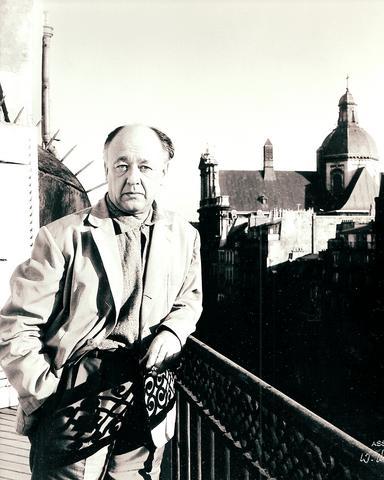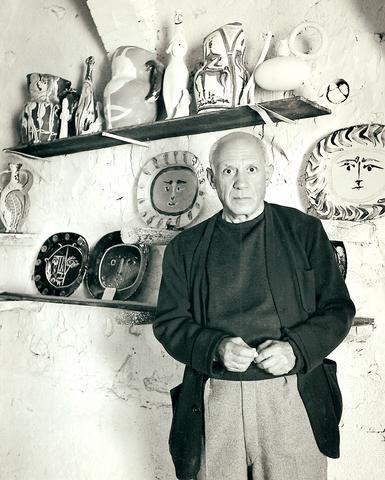Robert Doisneau's legendary Hotel De Ville photograph of a couple engaged in a passionate kiss while standing in front of the famous Paris hotel is one of the first images to come to mind when an exhibition of photos from France during the mid-1900s is announced. Romantic it may be, but just how accurately or adequately it describes Parisian culture at the time is debatable.
Willy Maywald's portraits, on in contrast, convey little about the physical landscape of the city in which they were taken, but say a lot about the creative milieu that was Paris during the first half of the 20th century. A selection of Maywald's black-and-white photographs, focusing on renowned France artists and entertainers from 1934 to 1984 is currently making a brief stop at the FNAC photo gallery in Asia World Plaza this month. And for a glimpse inside the lives of France's cultural elite, it is well worth a look.

PHOTOS COURTESY OF FNAC:
Viewed as the cultural capital of the Western world during both the 19th and 20th centuries, Paris was a leader in artistic innovation. The number of movements that emerged in and around the city, including Impressionism, Post-Impressionism, Symbolism, Cubism and Surrealism, best illustrates its creative environment. In addition to its own well-respected artistic community, was a steady migration of literary giants and artists including F. Scott Fitzgerald, Ernest Hemingway, James Joyce, Henry Miller, Jean Miro and Pablo Picasso among others.

Born and raised in Germany, in 1931 Maywald himself emigrated, where he studied photography and opened his own studio a few years later. It was there he befriended members of the local and foreign artist community, many of whom would later become the subjects of his own artistic endeavors.
Perusing the gallery, one is treated to a series of both French and expatriate artists among Maywald's collection of 36 photos, including Dutch painter Karel Appel, English sculpture Henry Moore, French performer Juliette Greco and mime Marcel Marceau.
Maywald draws on his subjects' profession to fill the frame making it possible to assume Sacha Guitry is an actor or Jacques Prevent is a poet by their facial expressions, before ever reading the title. At times a person slips out of focus as his or her work moves into the foreground to become the subject of the picture. Such is the case with Henri Heraut, who was photographed while working on a painting positioned behind a large shrine-like tomb, or Fernand Leger, who is dwarfed almost to the point of blending into one of his own large paintings.
There is definitely a feeling that Maywald knew his subjects well from the way he captures them on film. If there is any criticism of the exhibition it is that as a viewer you too wish to be more acquainted with the people in the pictures. Unfortunately other than a name, date and place where the photos were taken, there is no other description of the portrait available. While a brief history of the subject along with some details about the photo would be much appreciated, the photos themselves read like biographies.
Exhibition information:
What: Willy Maywald Portraits 1936/1984
Where: FNAC Photo Gallery (法雅客環雅店) in Taipei Asia World Department store located at B1, 337, Nanjing East Road, Sec 3, Taipei (台北市南京東路三段337號B1).
Telephone (02) 8712 0331.
When: Until Sept. 9 daily from 11am to 9pm.

As I finally slid into the warm embrace of the hot, clifftop pool, it was a serene moment of reflection. The sound of the river reflected off the cave walls, the white of our camping lights reflected off the dark, shimmering surface of the water, and I reflected on how fortunate I was to be here. After all, the beautiful walk through narrow canyons that had brought us here had been inaccessible for five years — and will be again soon. The day had started at the Huisun Forest Area (惠蓀林場), at the end of Nantou County Route 80, north and east

Specialty sandwiches loaded with the contents of an entire charcuterie board, overflowing with sauces, creams and all manner of creative add-ons, is perhaps one of the biggest global food trends of this year. From London to New York, lines form down the block for mortadella, burrata, pistachio and more stuffed between slices of fresh sourdough, rye or focaccia. To try the trend in Taipei, Munchies Mafia is for sure the spot — could this be the best sandwich in town? Carlos from Spain and Sergio from Mexico opened this spot just seven months ago. The two met working in the

Exceptions to the rule are sometimes revealing. For a brief few years, there was an emerging ideological split between the Democratic Progressive Party (DPP) and Chinese Nationalist Party (KMT) that appeared to be pushing the DPP in a direction that would be considered more liberal, and the KMT more conservative. In the previous column, “The KMT-DPP’s bureaucrat-led developmental state” (Dec. 11, page 12), we examined how Taiwan’s democratic system developed, and how both the two main parties largely accepted a similar consensus on how Taiwan should be run domestically and did not split along the left-right lines more familiar in

This month the government ordered a one-year block of Xiaohongshu (小紅書) or Rednote, a Chinese social media platform with more than 3 million users in Taiwan. The government pointed to widespread fraud activity on the platform, along with cybersecurity failures. Officials said that they had reached out to the company and asked it to change. However, they received no response. The pro-China parties, the Chinese Nationalist Party (KMT) and Taiwan People’s Party (TPP), immediately swung into action, denouncing the ban as an attack on free speech. This “free speech” claim was then echoed by the People’s Republic of China (PRC),